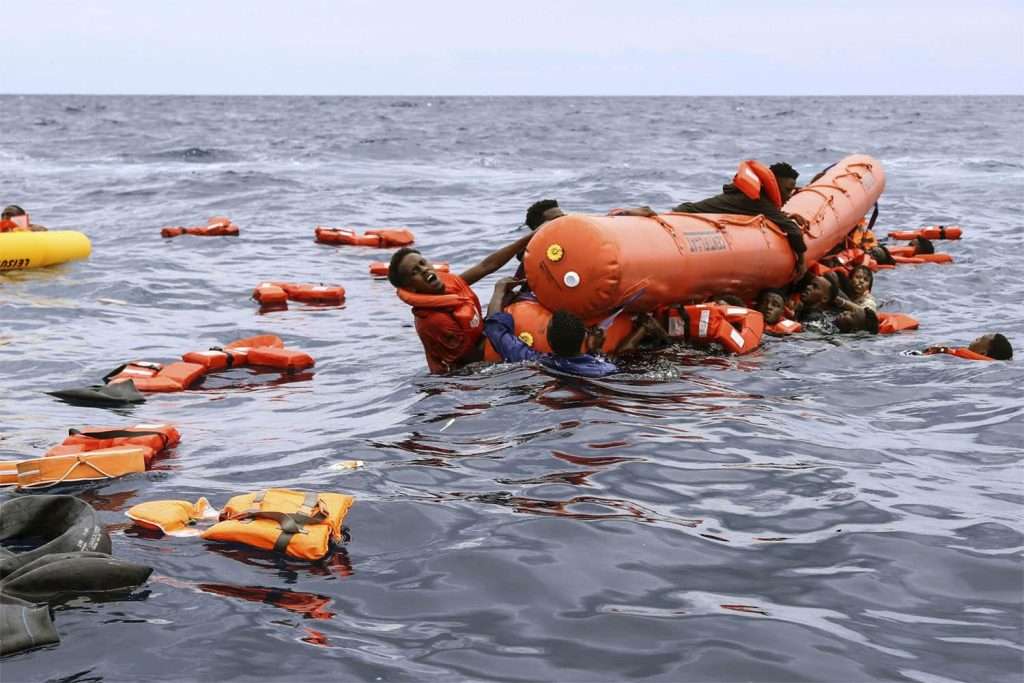EU under pressure from Italy over Libya’s African migrants

Libya’s stalemate with its presidential election and confused two state governance system is fuelling the number of illegal immigrants arriving there, reports from Italy, which follows the situation, suggest.
Italian Intelligence reports indicate nearly 700,000 migrants are in Libya awaiting an opportunity to set out by sea toward Italy, an MP from Premier Giorgia Meloni’s far-right party said on March 12th, but a U.N. migration official called the number not credible, reports AP.
Tommaso Foti, the lower parliamentary house whip for the Brothers of Italy Party, told television channel Tgcom24 the Italian secret services estimated that 685,000 migrants in Libya, many of them in detention camps, were eager to sail across the central Mediterranean Sea in smugglers’ boats.
Separately, 30 migrants were missing and 17 were rescued some 100 nautical miles (180 kilometers) from Libya’s coast after their boat overturned while a commercial vessel was trying to take them aboard, the Italian coast guard reported Sunday night.
Meloni is hoping a European Union meeting later this month yields concrete solidarity from fellow leaders of EU nations in managing the large numbers of migrants and asylum-seekers who come to countries on the Mediterranean’s rim, including Greece, Cyprus, Malta and Spain as well as Italy.
“Europe can’t look the other way”? Foti said.
While the intelligence services assessment sparked alarming headlines in Italy, a spokesperson for the International Organization for Migration cautioned that the figure appeared to be confusing the high end of the estimated number of migrants in Libya with those who were actually seeking to head from there to Europe.
“This number seems to be an estimate, that we also give, of the total presence in Libya,” Flavio Di Giacomo told The Associated Press in Rome.
READ: Fleeing African migrants from Tunisia perish at sea, 14 dead
But of that number “only a minimum part want to leave and only a minimum part succeeds in leaving” for Europe, Di Giacomo said. For example, many migrants in Libya come from Niger and Chad, two African nations on Libya’s southern border, and eventually return to their homelands, he said.
The Italian intelligence service’s estimate “is the last of a long series of alarms that we’ve seen in the last 10, 12 years, that turned out to be mistaken” Di Giacomo said. ”That number doesn’t seem to be absolutely credible.”
Some 105,000 migrants reached Italy by sea in 2022.
From the start of this year through March 10, some 17,600 arrived, including a few thousand who disembarked at Italian ports in the last several days. That’s about triple the number for the same time period in each of the two previous years, although the COVID-19 pandemic might have led to fewer voyages.
Just recently, three more bodies were found from a Feb. 26 shipwreck just offshore the Italian peninsula, raising the known death toll in that disaster to 79 migrants, Italian state TV said.
For years, Italy has tried with limited success to induce Libya to stop launches of people smugglers’ unseaworthy fishing boats and rubber dinghies toward Italian shores. Italian governments have trained and equipped the Libyan coast guard.
But the traffickers behind the smuggling rings continue to operate amid Libya’s amid feuding political and militant factions.
Want to chase the pulse of North Africa?
Subscribe to receive our FREE weekly PDF magazine














